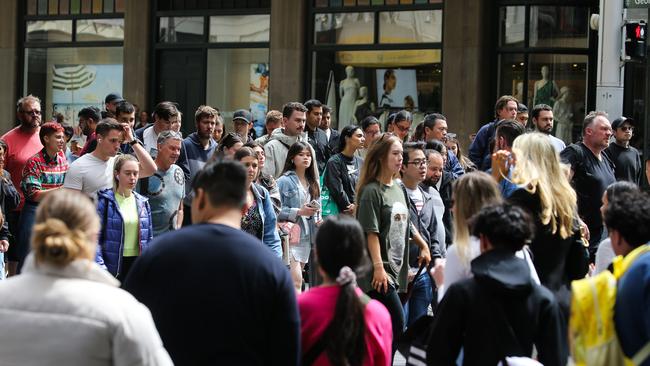Labor misses net migration forecast amid international student surge
Labor has overshot its net migration forecast by 50,000 people despite a fall in overseas arrivals.

Labor has overshot its net migration forecast by 50,000 people, despite a fall in overseas arrivals, raising expectations the Albanese government will be forced to revise its projections in next week’s budget update.
Net overseas migration was 445,600 in the 2023-24 financial year, Australian Bureau of Statistics figures reveal, exceeding the federal government’s forecast of 395,000 in the year to June.
As he prepares to hand down the mid-year fiscal update next Wednesday, Jim Chalmers said net migration had fallen to its “lowest level since the pandemic”, though departures remained higher than anticipated in the last federal budget.
“While departures are taking longer to normalise than forecast at the budget, we’re already starting to see overseas arrivals come down to more manageable levels and they’ll fall further as more of our policies take effect,” the Treasurer said.
With migration shaping up to be a defining issue at the federal election, Dr Chalmers attacked Peter Dutton’s record on the issue, accusing the Opposition Leader of having “no credible, coherent plan to ensure the sustainability of the migration system”.
On Sunday, Mr Dutton dumped his pledge to reduce net overseas migration (the difference between long-term and permanent departures) to 160,000 in his first year in office if he were to win the federal election.
Former immigration department official Abul Rizvi said the government had fallen far short of the Treasury forecast, and would need to revise its projections in the mid-year budget update. He said Labor was already on track to miss its estimate of 260,000 for the 2024-25 financial year.
“For the first four months of this financial year, (net migration) is running about 12 per cent below the previous financial year,” he said. “But it has to be running 40 per cent below the previous financial year. With four months, a third of the year, over, they’re not going to catch up.
Mr Rizvi said net migration was primarily driven by the large number of international students who remain in the country, despite the rate of arrivals slowing amid a government crackdown. He said strong uptake in the working holiday visa and an influx of New Zealand citizens were also powering net arrivals.
“In 2023-24 what we did see was some substantial slowdown in student arrivals, but there was a slowdown in departures,” he said.
“That’s why the student contribution probably remained high. It will undoubtedly still be the biggest contributor to the 445,000.”
Coalition immigration spokesman Dan Tehan criticised Labor for the surge in migration. “Labor is highly likely to miss its migration target of 260,000 for the current financial year, after the ABS reported 150,530 net arrivals in the first quarter of 24-25,” he said.
In a bid to curb net migration, Labor has slashed the international student intake by introducing a controversial ministerial direction prioritising visa applications from students with offers from providers deemed to be “low risk”.
After the Coalition torpedoed the government’s plan to legislate a limit of 270,000 for next year, Education Minister Jason Clare declared the “de facto cap”, Ministerial Direction 107, would remain in place. Labor is preparing to axe Direction 107, as revealed by The Australian, and replace it with a new directive that will keep international student numbers in line with the allocations set out under the government’s cap policy.
As the sector reels from a series of policy changes, Universities Australia chief executive Luke Sheehy has called on Labor and the Coalition to commit to re-establishing the Education Investment Fund to support the sector’s growth. “We have no choice but to grow and improve our university system – Australia needs more of what our institutions do on behalf of all Australians, and quickly,” he said. “But we need our universities to be match fit to deliver for the nation.”



To join the conversation, please log in. Don't have an account? Register
Join the conversation, you are commenting as Logout